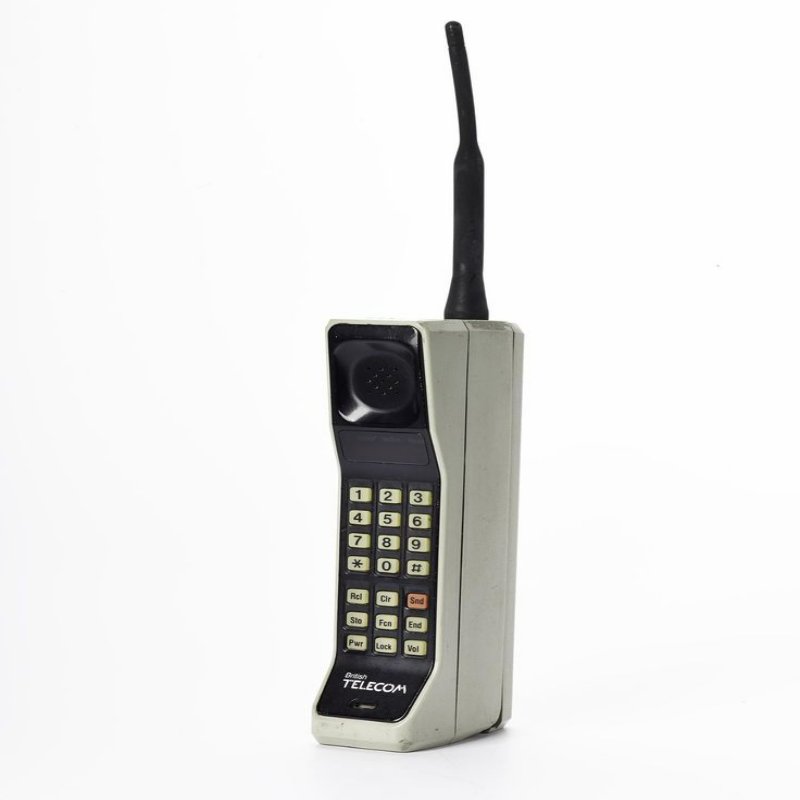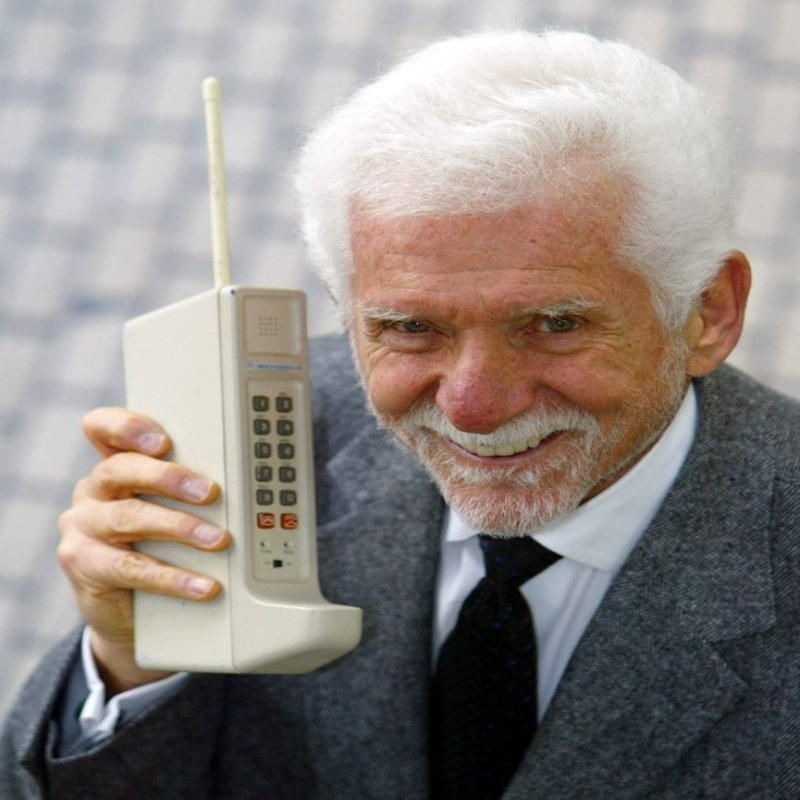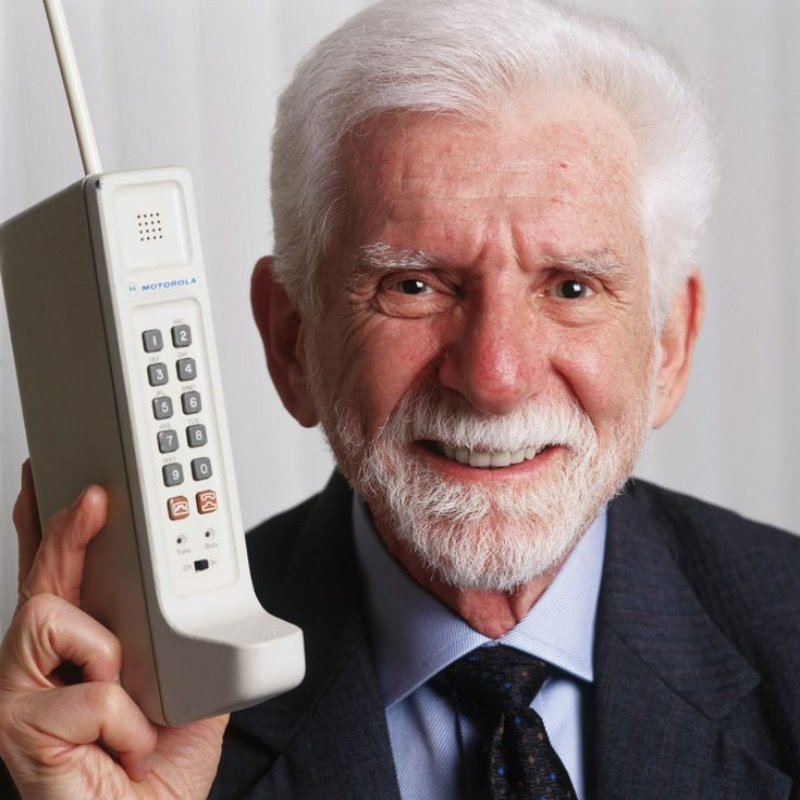In an era dominated by instantaneous communication, it’s hard to imagine a world without cell phones. Their evolution has significantly shaped modern technology and society, altering how we connect with each other, share information, and even conduct business. But this transformation stemmed from the groundbreaking invention of the first cell phone. Who invented the first cell phone ? Let’s delve deeper into the origins of this essential device, its inventor, and the far-reaching effects it has had on our lives.
The Pioneer Behind the First Cell Phone: Martin Cooper
The invention of the first cell phone is credited to Martin Cooper, a Motorola engineer who made the first handheld mobile telephone call on April 3, 1973. Armed with a vision of a truly mobile communication device, Cooper and his team at Motorola set out to change how people interact.

The Inaugural Call – A Revolutionary Moment
On that historic day, Cooper made a call to his rival, Joel Engel, head of the Bell Labs, using the Motorola DynaTAC 8000X. The significance of that moment cannot be understated; it marked the beginning of an era where communication was no longer confined to landlines. Cooper’s monumental achievement showcased not just the engineering prowess of his team but also demonstrated the potential for personal communication freedom: a device that could be carried anywhere, and yet remained connected.
The Technical Innovations that Enabled Mobile Communication
The DynaTAC 8000X wasn’t just an extraordinary feat of engineering; it was the culmination of various technological advancements that made mobile communication possible.
Key Technologies
Transistor Technology: The miniaturization of electronic components, particularly transistors, allowed the development of smaller, more efficient circuits essential for handheld devices.
Battery Innovations: The DynaTAC utilized a rechargeable battery, a necessity for the portability that Cooper envisioned. However, the battery life was only about 30 minutes, reflecting a significant area for improvement.
Radio Frequencies: Cooper’s device used radio waves to connect to the phone networks, enabling long-distance communication without the need for physical wires.
Despite its bulky design and limited battery life, the DynaTAC was a marvel of its time. It weighed almost 2.5 pounds and measured over a foot long. Yet, it paved the path for future models, rapidly advancing mobile technology.
The Evolution of Cell Phones: From Bulky Behemoths to Sleek Smartphones
The first cell phone may have seemed rudimentary by today’s standards, but it inaugurated a series of technological breakthroughs that revolutionized mobile communication.
The 1980s to 1990s: The Rise of Cellular Technology
Throughout the 1980s, advances in cellular technology saw the introduction of more compact models, such as the Motorola MicroTAC. By further minimizing the size and weight, engineers made cell phones more accessible and appealing to the masses.
The Digital Revolution: The Switch from Analog to Digital
With the advent of digital cellular technology in the late 1990s, mobile phones experienced a profound transformation. Digital signals allowed for clearer calls, greater capacity for user connections, and enhanced security features. The introduction of SMS (Short Message Service) in the early 1990s further revolutionized communication by allowing users to send text messages, unlocking a new form of personal interaction.
The 21st Century: The Smartphone Era
The introduction of Apple’s iPhone in 2007 fundamentally altered our perception of mobile devices. It was more than just a phone; it was a mini-computer equipped with a touch-screen interface that allowed users to browse the internet, take high-resolution photos, and use applications that vastly increased functionality.

Key Innovations in Modern Smartphones
Touchscreen Technology: This vastly improved user interface made interaction intuitive and sparked the application revolution.
App Ecosystem: The creation of app stores allowed third-party developers to contribute to the functionality of smartphones, creating an ecosystem around mobile computing.
Mobile Internet: The evolution from 3G to 4G, and now 5G, has provided incredibly fast internet access, making it easier than ever to stay connected and get information on the go.
The Societal Impact of the First Cell Phone
The developments initiated by Martin Cooper’s DynaTAC have fundamentally transformed society. The impact of cell phones is felt in virtually every aspect of daily life.
Communication Revolution: Breaking Barriers
Cell phones have redefined communication. Previously, connecting with someone required the use of landlines and waiting for the right opportunity to make that call. Today, with messaging apps, social media, and video calling, we are perpetually connected. This level of accessibility has been transformative:
Global Connectivity: People can connect instantly, regardless of their location. This has fostered international relationships and expanded global businesses.
Emerging Markets: Cell phones have penetrated markets that lacked robust communication infrastructures. Countries in Africa and Southeast Asia have seen leaps in economic development partly due to mobile technology.
The Work-Life Balance Dichotomy
Cell phones have blurred the lines between work and personal life. While they have made remote work possible and increased productivity, they have also contributed to the expectation of constant availability—a double-edged sword for many.
The Social Landscape: Impact on Relationships
In the context of relationships, cell phones have transformed how we interact. While they make it easier to stay in touch, they also present challenges. Text messages and social media interactions can sometimes replace in-person connections, leading to superficial interactions.

The Technology Behind Modern Cell Phones: A Deeper Dive
Understanding the technology behind today’s smartphones gives us insight into why they’re so integral to our daily lives.
Processors: Modern smartphones are powered by multi-core processors capable of handling complex tasks, which is essential for multitasking.
Memory and Storage: Increased RAM and internal storage have allowed smartphones to rival computers in capability and functionality.
Camera Technology: With high-quality cameras built into phones, photography has become more accessible, redefining social media and personal expression.
Smartphones have equipped us with tools for navigating our world with GPS technology; we can find our way through unfamiliar cities, check public transport schedules, and even receive alerts about real-time traffic.
Future Trends in Mobile Technology: What Lies Ahead?
As we contemplate the future of mobile technology, several trends seem poised to emerge, continuing the legacy of Martin Cooper and his groundbreaking achievement.
The implementation of 5G networks promises to increase data transfer speeds exponentially, enhancing the capabilities of smartphones and enabling technologies like augmented reality (AR) and virtual reality (VR) to become more mainstream.
The rise of wearables such as smartwatches and fitness trackers integrates seamlessly with our smartphones, creating an interconnected ecosystem that enhances our health and lifestyle management.
Conclusion: Reflecting on a Communication Milestone
The invention of the first cell phone by Martin Cooper was not just a technical milestone but a catalyst that ignited profound changes across technological, social, and economic landscapes. The reverberations of that solitary call made over fifty years ago continue to shape our lives in ways that were unimaginable then.
As we stand on the brink of further innovations in mobile technology, it’s worth reflecting on how far we have come and contemplating where we are heading.
The journey from the massive DynaTAC to today’s sleek smartphones is a testament to human ingenuity and the relentless pursuit of improvement. As we dive deeper into this digital age, it is essential to consider both the opportunities and challenges that come with such rapid technological advancement, ensuring that the legacy of communication continues to evolve the responsibly and inclusively.